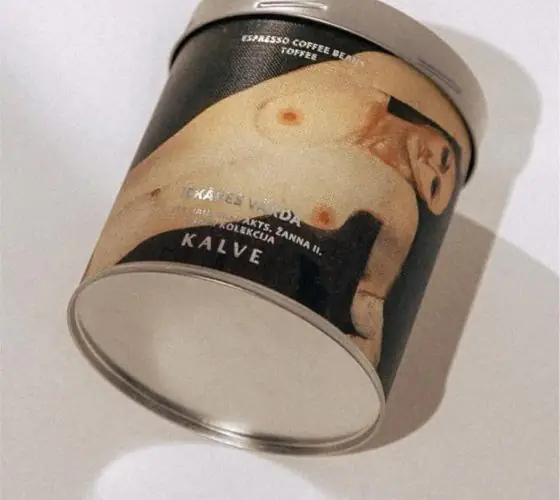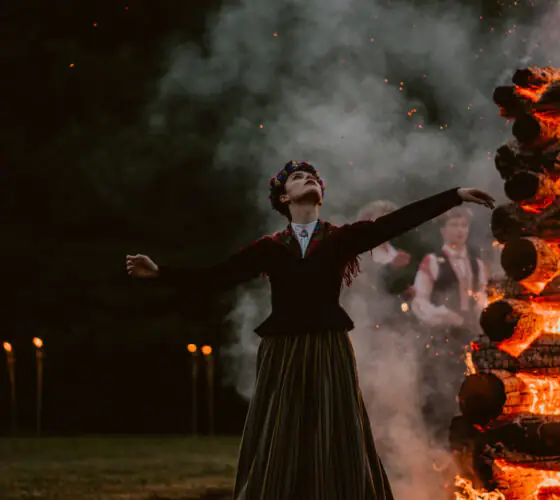
teatravestnesis.lv
It all started with theater
Viesturs Kairish is a recognized director not only in his homeland, but all over the world. First of all, in Europe he is known as an opera director.
Kairish began his career in the theater in the late 1990s, and quickly became a full-time director at the New Riga Theatre. After three years of work, he staged Pyotr Tchaikovsky’s opera “Eeugene Onegin” at the Latvian National Opera – and received the national Grand Music Prize for it.
Soon he was invited to work on the project of the tetralogy “The Ring of the Nibelungs” – Wagner’s opera. A little later, interpretations of the masterpieces of international drama by Kairish were already on the stages in Berlin, Cologne and Darmstadt.
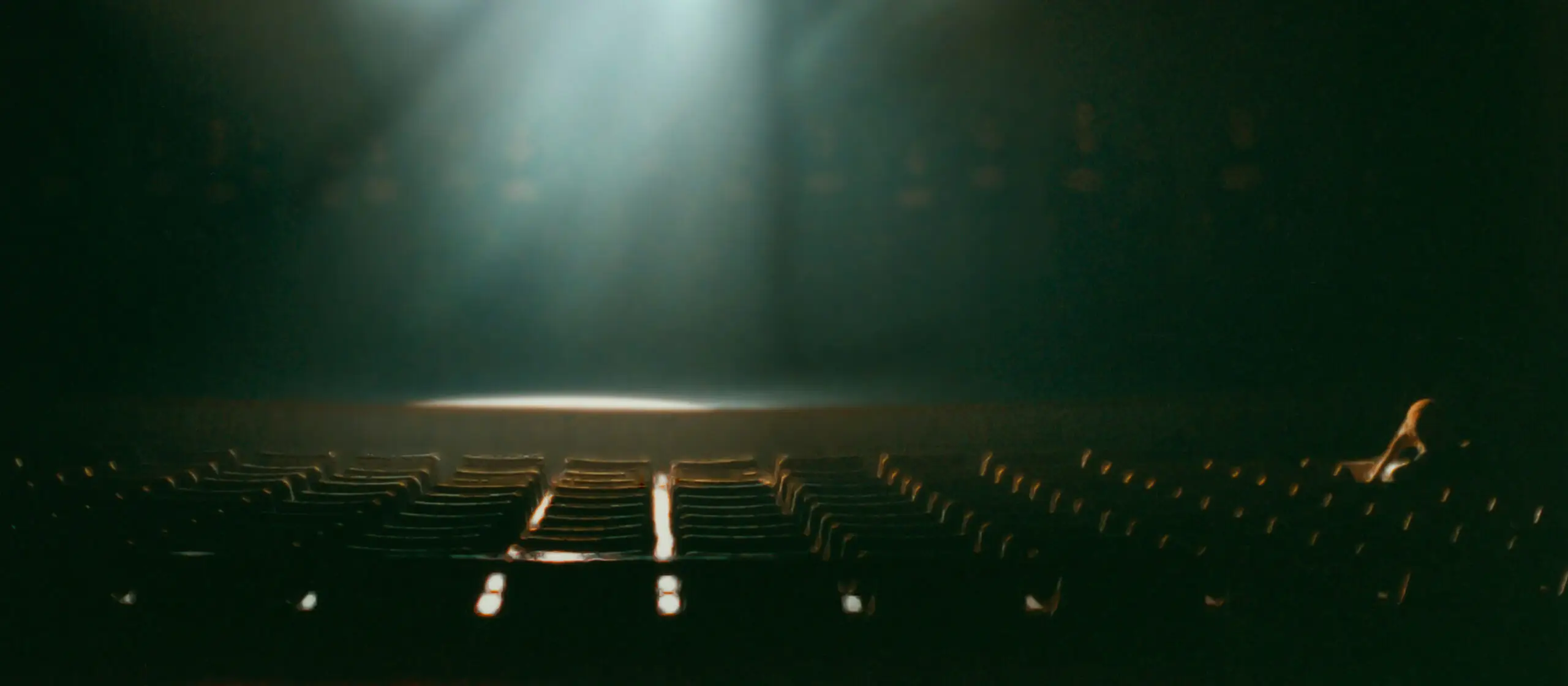
stock.adobe.com
Since 2020, Kairish has been the artistic director of the Dailes Theatre. On his stage, Kairish directed works by Shakespeare, Ibsen, Brecht, Wilde.
Viesturs Kairish also works with the national literature a lot. Plays by Latvian writer and playwright Rudolfs Blaumanis, writer and winner of the Baltic Assembly Prize Inga Abele, poet Mara Zalite have been staged under his direction Kairish creates art that answers relevant questions of the audience. The atmosphere of his performances always corresponds to the mood of society.
The same approach can be traced in his films too.
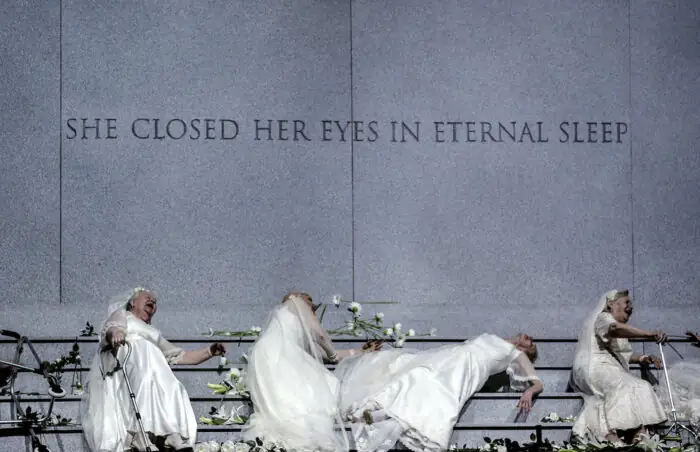
facebook.com/LatvijasNacionalaOperaunBalets
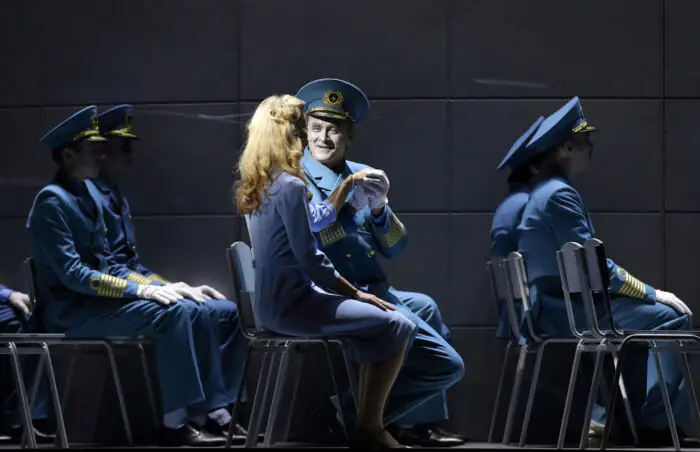
facebook.com/LatvijasNacionalaOperaunBalets
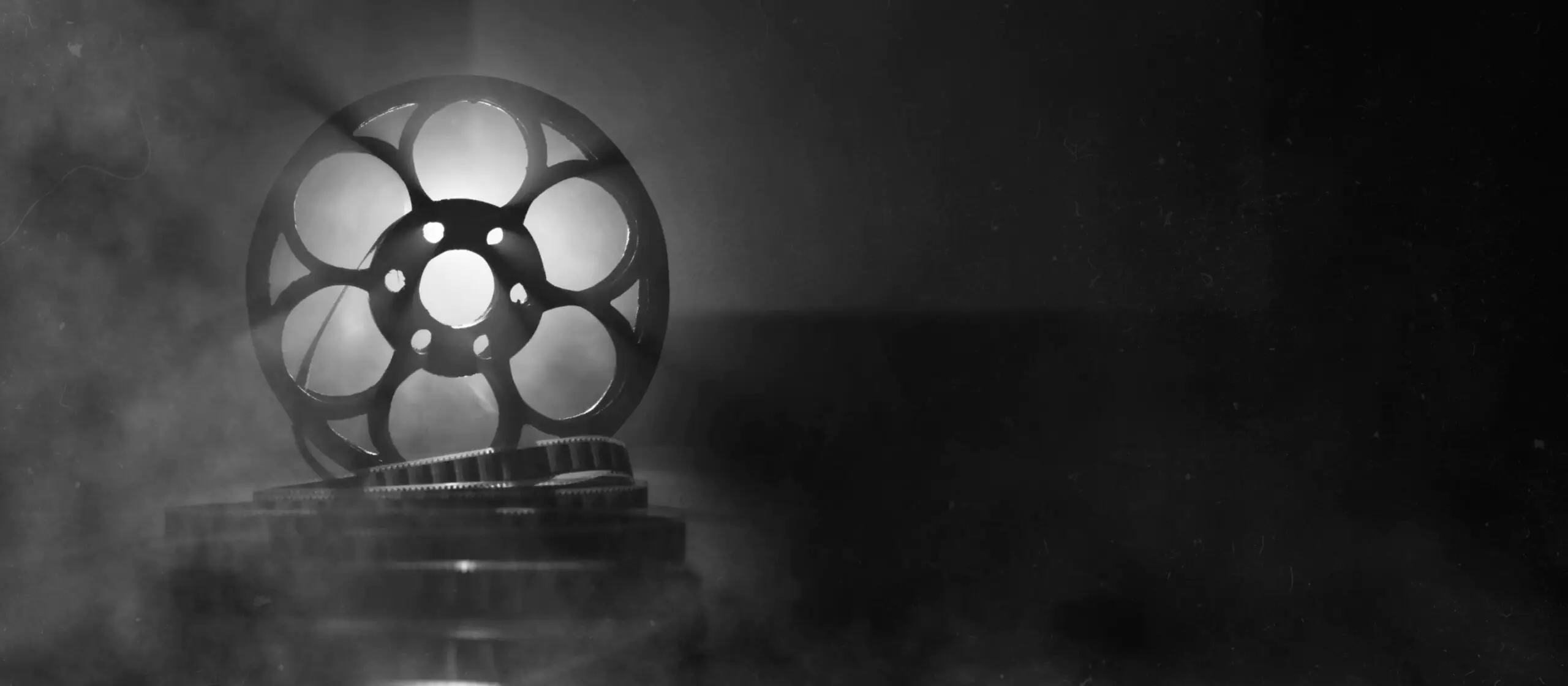
“The Chronicles of Melania”, or collective memory
Kairish builds the space of a feature film in such a way for it to become a part of the viewer’s own world and personal history. The heroes of the film are real people, while scenery and props – real things from everyday life.
An important statement about the history of Latvia for Kairish was a biographical picture “Chronicles of Melanie”, based on the book of journalist Melanie Vanaga.
The black and white historical drama recreates on screen the national tragedy of June 1941 – a large-scale mass deportation of the Latvian population. The first wave of deportees to Siberia was 15 thousand people. The film shows the difficult fate of a woman who spent 16 years in exile in hard labor. One heartbreaking story told on the screen, but how many of them are unknown and gone? Thousands.
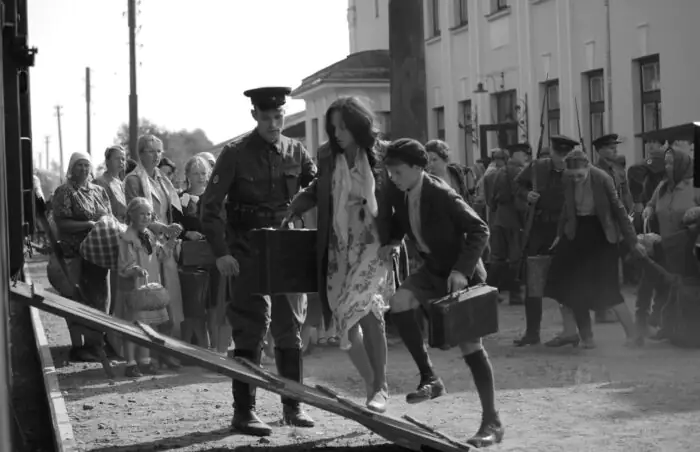
satori.lv
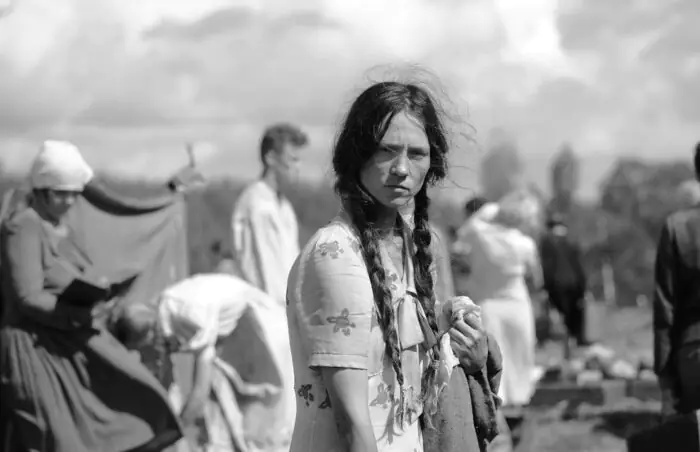
satori.lv
In “The Chronicles of Melania”, the director uses fine editing: seasons change very fast – just as quickly, but monotonously and horribly sadly – the life of Melania passes in the Krasnoyarsk Territory.
The box of never-sent letters that Melania writes to her husband fills before her eyes. And although the dynamic montage does not allow the viewer to fully immerse themselves in the monotony of the heroine’s life, there is horror in the thought of how easily these 16 years were deleted from the heroine’s life.

chayka.lv
Latgale in the spotlight
An important difference between cinema and real life is its concreteness. The viewer’s gaze clings to a certain aspect of reality, deliberately highlighted by the director. He places emphasis on and shows the problem from his point of view, shifting the focus to what he believes is especially important.
It is featured in the documentary “Pelican in the Desert” (2014). The viewer does not have the opportunity to choose how to look at Latgale. Kairish transmits his vision of the area with the help of the camera. He wants to infect the viewer with his own love and fascination for the ancient Latvian land. He literally proves to the person on the other side of the screen the importance of Latgale, its nature and customs.
Increased interest in Latgale can be traced in many of the director’s films. It arises as an atmospheric scene already in his first feature film “Leaving by the way” (2001). However, Latgale gets a more important role in the film “The Sign Painter” (2020).
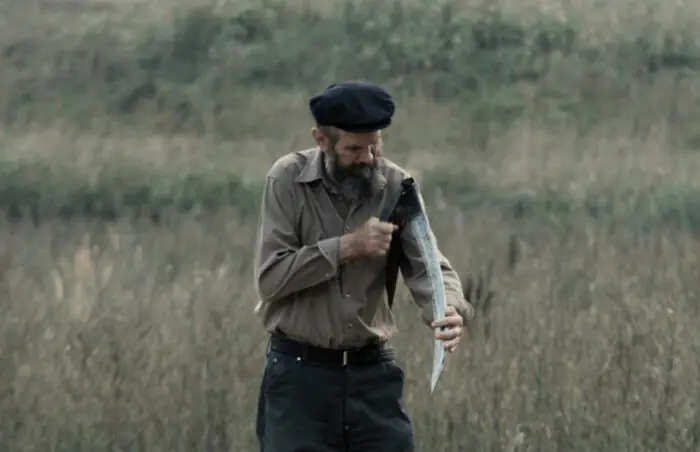
latvijasfilma.lv
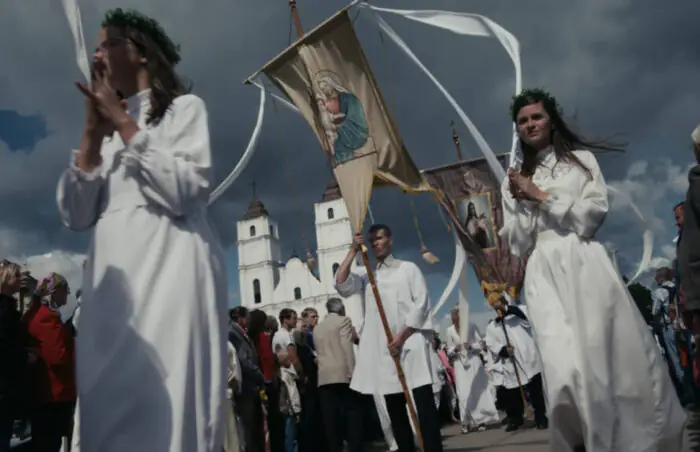
latvijasfilma.lv
Did we even exist in the “River City”?
Kairish wonders what place Latvia has in world’s history: does it exist outside the context of the countries which territories were occupied in the twentieth century? What is Latvia’s identity, independence, freedom?
The director develops this idea in the film “The Sign Painter”. In a small unnamed town in the lovely Latgale epochs replace each other. First the Latvian dictator Ulmanis, followed by the communist period, and then the Nazi’s.
The protagonist — Ansis, an ordinary artist who designs signs and pointers, lives in this boiling kettle of history while doing his favorite thing — drawing. Dizzying events unfold around him, shaking the picture of the world of an ordinary and modest inhabitant of Latgale.
The director also creates this instability around the main character visually, throughout the film, using the Dutch angle at which the camera deliberately tilts the horizon. Basically, this technique is used in order to show the excitement and emotional experiences of the hero. Here, the whole reality, the entire historical past of Latvia is a complete instability.

facebook.com/pilsetapieupes
Freedom, Air, “January”
1991 was a turning point for the whole country and, of course, for the director. This year has a huge impact on Kairish – after 19 years of life in Soviet Latvia, the whole world finally opens up for him. Including the cinematic.
For Kairish, it was important to emphasize this experience and reflect it in the film “January” (the winner of the Tribeca competition and the nominee from Latvia in the long list of the Oscars 2023).
This drama about the growing up of young directors experiencing the Riga barricades, won not only the hearts of Latvian, but also the international audience. Kairish dedicated the film to all filmmakers who died in an attempt to capture the epic events of their homeland.

baltics.news
January as the first month of the year is the birth of a new state and nation. Each beginning gives strength and hope for a better future, for new opportunities. And along with a new story, new creative personalities appear — the main characters of the film.
“January” finally shows the Latvians as they were afraid to be throughout the 20th century. People who are ready to defend their independence and identity. They no longer have fear which the heroes of “The Sign Painter” experienced.
In an interview, Kairish said that art should heal people, or at least try to. For him, the camera and cinema are weapons with which the director exposes lies and offers a new way.



